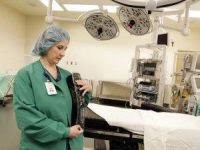Healing without harm
Two hundred years ago, surgery was the only technique to cure malignant tumors. In 1812, it was published in the first issue of The New England Journal of Medicine, a medical journal with the largest circulation until the present day. As part of the commemoration of the 200th anniversary, the magazine did a review of the main works on the evolution of surgical oncology.

By Drauzio Varella
In 1809, well before the advent of anesthesia, Ephraim McDowell removed an ovarian tumor, demonstrating that malignant tumors of internal organs could be cured by surgery, if performed by skilled hands in the shortest possible time, because of the pain. It was the first abdominal surgery performed in the United States.
In 1846, John Collins Warren described the first public use of anesthesia. With the patient under anesthesia, it was possible to perform more complex operations, although they were associated with extremely high rates of infections and complications.
In 1867, Joseph Lister introduced antisepsis into surgical practices, a fundamental step for advances in cancer treatment that have occurred in the nineteenth century and in the first decades of the twentieth century. It was clear that any organ affected by a malignant tumor could be surgically addressed.
At that time, I worked in Chicago with a surgeon who wielded enormous influence among his peers: William Halsted, today, the name of one of the avenues of the city. In 1894, Halsted introduced the technique internationally known as a radical mastectomy, based on a new concept: the "en bloc resection."
A radical mastectomy recommended the removal of the entire breast, the chest muscles below them and all lymph nodes in the armpit, in continuity - hence the name of en bloc resection. The skin was resting directly on the ribs and intercostal muscles, it was mutilation with a major impact on femininity and women's lives.
The principle that guided Halsted was that the malignant cells will spread in a centrifugal manner, from the breast to neighboring structures. Healing was only possible if the surrounding tissues were removed from a single block along with the primary tumor, elementary education, to prevent tumor cells from being left behind in the procedure.
In many centers around the world, some influential surgeons took so seriously the ideas of Halsted, they started to carry out the extended radical mastectomy, in which they also removed the existing nodes in the supraclavicular fossa.
Soon, these bloc resections were taken to tumors of other organs. The principle of radical described by Halsted became the first commandment of surgical Oncology, despite the lack of scientific evidence and the weakness of the arguments that supported it.
It took 74 years for the logic of radical mastectomy and the block resection to be questioned, curiously, by another American surgeon: Bernard Fisher.
Based on experiments with mice, Fisher proposed that breast cancer cells have access to the bloodstream and lymph nodes in the early stages of development. The macroscopic lymph node involvement would be a simple regional reflex of the disease that has already spread.
The radical mastectomy, he said, was at the same time too much and too little. This is exaggerated in the case of small tumors, and insufficient to cure advanced tumors.
In the following years, a series of clinical studies, with thousands of patients, was conducted by a cooperative group later dubbed the "National Surgical Adjuvant Breast and Bowel Project" (NSABP). Fisher showed that breast cancer could be treated with much more economical operations, with the same cure rates and incomparably superior aesthetic results.
The methodology employed by the NSABP in the analysis of statistical data became mandatory in the studies. Modern oncologic surgery was born.
Translated from the Portuguese version by:
Lisa Karpova
Pravda.Ru
Subscribe to Pravda.Ru Telegram channel, Facebook, RSS!


